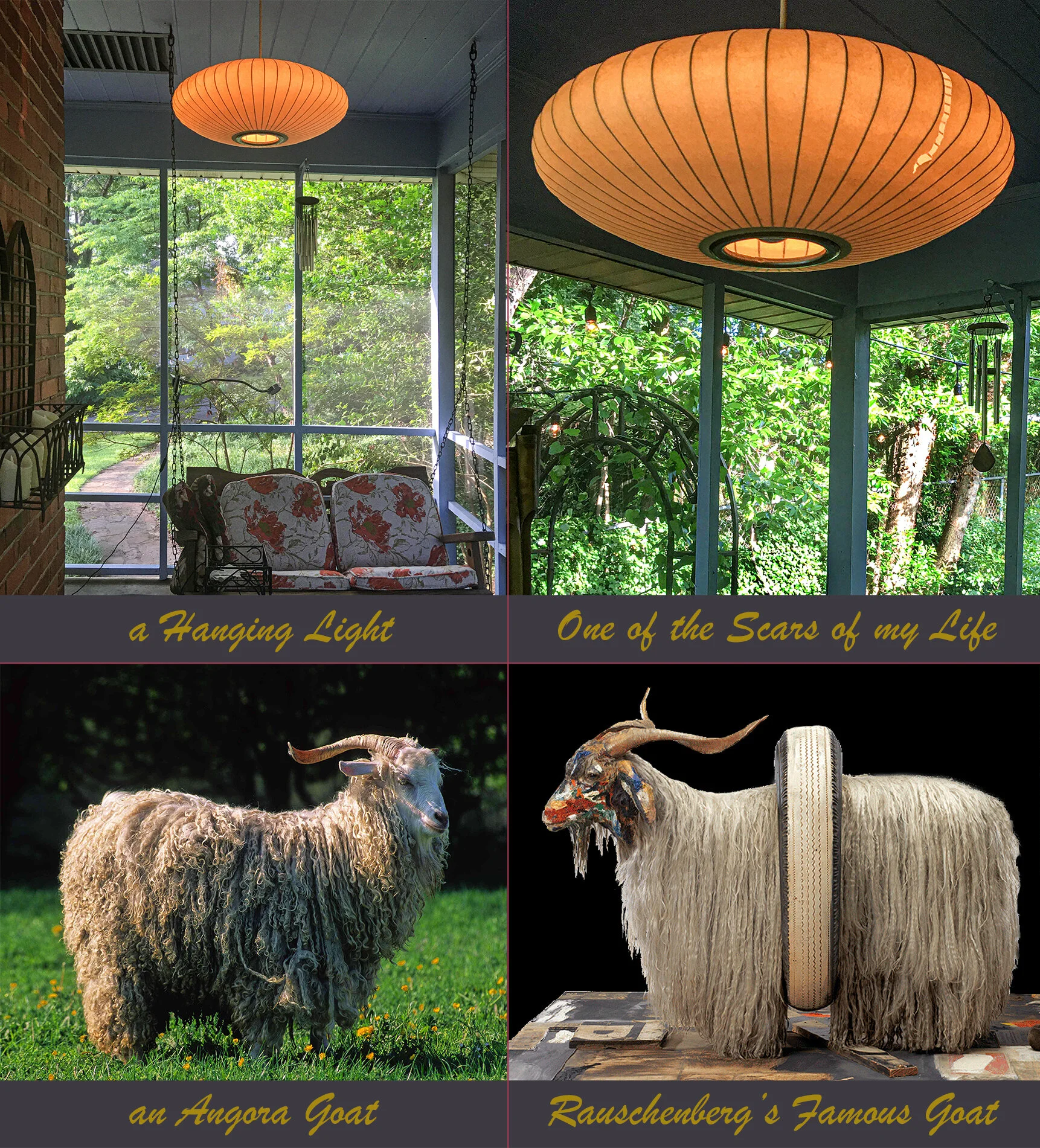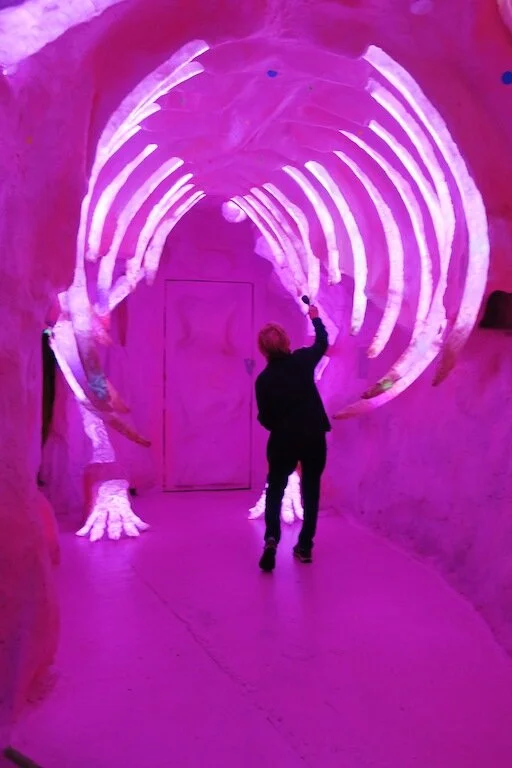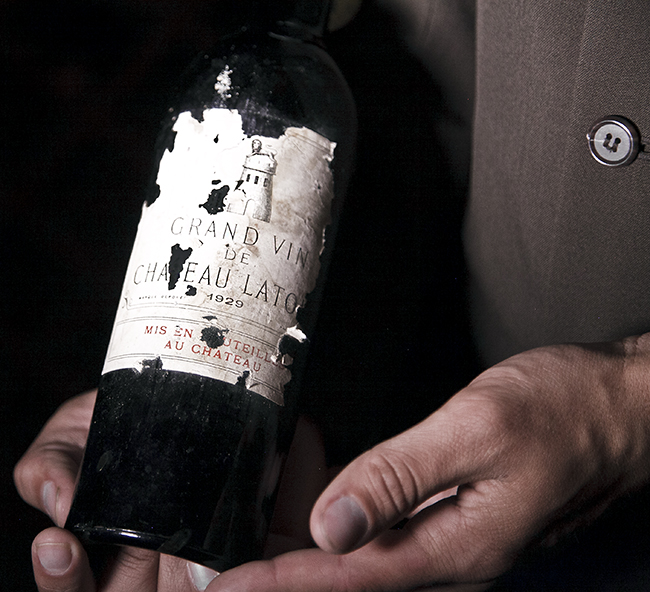Drawing parallels to personal family history, writer Eric Lucas reflects on the distinction between "the law" and "justice." With a blend of wit and gravity, he challenges the notion that legality always aligns with morality, leaving readers to ponder the complexities of art theft and historical injustices.
All tagged Art
How Exposure to Indian Art Taught Me to Love My Body
Join Noor Anand Chawla on a powerful exploration of self-empowerment and the celebration of individuality as she explores the transformative impact of Indian art, challenging conventional beauty ideals and inspiring a new perspective on self-worth.
Finding the Perfect Light
When Cliff Simon’s cherished vintage lamp is damaged, his distress leads him to the Japanese art of Kintsugi and the point of view that something can break and still be beautiful, and that, once repaired, it is stronger at the broken places.
Meow Wolf: Where Wonderment Compensates for a Lack of Words
Travel writer Fyllis Hockman was left speechless (well, almost) by a visit to Meow Wolf, an immersive art experience in Santa Fe, New Mexico.
A Love Story on a Wall in Toronto
A random encounter on a train to Toronto leads Melanie Kitzan to a bar in Graffiti Alley and the powerful love story of a new friend.
The Little Burmese Tout in Training
I was an easy target, strolling happily towards the temple outside
As a seasoned traveler, I’d seen my share of touts. Overly
I learned long ago to avoid eye contact. Keep walking. Say nothing to encourage them. But from the moment my plane touched down in Burma, I felt no need for such guardedness.
story and photos by Paul Ross
I suppose that, like most people, topping my “What if..?” fantasy list is the question, “What if I had a lot of money?”–So much money, that not only would I not have to worry about it, I would never even have to think about what I spent. What would I do with those kinds of assets? Support charities? Fund politicians? Gamble (and I include the stock market)? Or just buy a lot of stuff? And what form might the purchasing take? I already travel, so-- Cars? Clothes? Jewelry? Boats and planes? Art?
In this last category, I had a chance to see what that indulgence might look like at the Nemacolin Woodlands Resort in the Laurel Highlands region of Pennsylvania. Grillionaire Joseph A. Hardy made megabucks through 84 Lumber, his building supply chain store. I didn’t meet the man but, from what I heard, what I saw in images of him scattered throughout the expansive property and the nature of the complex itself, I got an impression: big, brash, determined, impulsive, self-motivated, assured beyond surety, independent and generous; in short, a real American. Let me paint the picture for you from what I experienced. See if you get the same mental image.
Getting Potted in Minnesota
by Laurie Gilberg Vander Velde
“Hi, son, do you need any pots?” I asked my son on the phone. I was standing on a hillside in the beautiful St. Croix River Valley. Dark clouds dropped cold, almost icy, droplets on us one minute; the sun shone the next. We were bundled up against the cold spring weather we had not anticipated when we headed up to the Minneapolis area for the annual St. Croix Valley Pottery Tour over Mothers’ Day weekend. Wooden planks which spanned sawhorses were the simple palette for a varied display of handmade ceramic pots.
 Pottery for sale on the hillside outside Guillermo Cuellar's studio overlooking the St. Croix Valley.
Pottery for sale on the hillside outside Guillermo Cuellar's studio overlooking the St. Croix Valley.
My son replied quickly to my inquiry. “No, Mom, I don’t need any pots…And you don’t either!” He was probably right, but he was talking to a confirmed pot head. My husband Michael and I love ceramics, and it had taken us years to get to the pottery tour. We’d known about the Minnesota potters for a long time. Warren Mackenzie, American pioneer studio potter, taught at the University of Minnesota for a long time and inspired many students with his simple, functional, affordable pieces. We’d admired his work, read books about him and had managed to acquire a few of his pieces over the years.
Was it necessary for us to buy another pot by Warren MacKenzie or any other accomplished potter? To tell the truth, necessity hasn’t entered into our pursuit of fine handmade pottery since back in the late sixties when we bought our first pieces at the Ann Arbor Artist Guild sales. In more than forty years of marriage, pottery has been a passion for both of us.
words + illustration by K. Michael Crawford
I can’t believe the day is finally here. After months of keeping my head to the grindstone to finish my latest book, I am getting a vacation. So now, I can gather up my finest vacation wear and head out the door for a little fun in the sun or maybe a Shirley Temple on the beach. Wherever this vacation goes, I will follow.
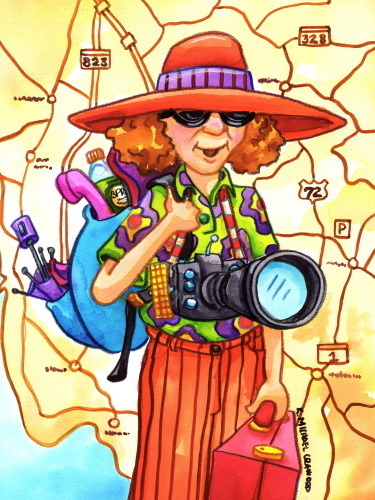 Before I head out the door, I know that every good vacation needs the essentials. So, with first things first, I forge through my closet to make sure I have the perfect vacation clothing. You have to look just right, part “world traveler” and part “oh yeah, I don’t stand out too much and look like an idiot.” To select the right look, I put on a slightly wrinkled top with comfortable wrinkled pants. Next, comfortable sneakers are always my choice of shoes for getting away from it all. Besides being great for walking, they are great with the “airline only lets me have one bag now” look. The last thing I do, as far as my appearance goes, is put my hair up for easy maneuvering through new and exotic places.
Before I head out the door, I know that every good vacation needs the essentials. So, with first things first, I forge through my closet to make sure I have the perfect vacation clothing. You have to look just right, part “world traveler” and part “oh yeah, I don’t stand out too much and look like an idiot.” To select the right look, I put on a slightly wrinkled top with comfortable wrinkled pants. Next, comfortable sneakers are always my choice of shoes for getting away from it all. Besides being great for walking, they are great with the “airline only lets me have one bag now” look. The last thing I do, as far as my appearance goes, is put my hair up for easy maneuvering through new and exotic places.
Now, for the add-ons. Everyone knows that you need a big wamping camera to announce to the locals, “Come and get me. I am just waiting to be mugged.” So I place my Hubble Telescope camera around my neck, followed by a straw hat large enough to house a small family. The hat is also used to shield any type of ray from the sun two universes over and prevent any orbiting satellites from identifying that it’s me in the photo.
Any good tourist knows what goes in their backpack or satchel is the most important element to enjoying that fun-filled vacation. You never know what you will stumble upon, so you want to be prepared for the unexpected, or in my case most of the time, the unexplained.
by Katya Miller
The Hamsa caught my eye early in my formative years as a jeweler, symbolist, and amulet maker. It was much more exotic than the Star of David that represented Judaism. It evoked a middle eastern world of colorful clothing, sacred architecture and the three faiths of Jerusalem, but I didn’t understand how it related to my own beliefs. I knew it was an abstract hand shape, inverted with thumb and pinky pointing outward and similar to the many such indigeneous hand designs in cultures worldwide.
 The Khamsa, (in Arabic: Khamsa means “five”) is an icon in amulets, charms, and jewelry, to protect against bad eyes. The Islamic name for the charm is the Hand of Fatima or Eye of Fatima, referring to Fatima Al-Zahra'a, Prophet Muhammad’s small and most beloved daughter. She married Ali, the son of Abu Taleb who was especially loved by Mohammad as the first one who accepted him. Only from her Mohammed had grandchildren and all of her sons were important leaders. She is very important in the Shiite Islam and there only her descendants can be Khalifs. Many girls are named Fatima, meaning a rose, considered holy. She must have had healing hands.
The Khamsa, (in Arabic: Khamsa means “five”) is an icon in amulets, charms, and jewelry, to protect against bad eyes. The Islamic name for the charm is the Hand of Fatima or Eye of Fatima, referring to Fatima Al-Zahra'a, Prophet Muhammad’s small and most beloved daughter. She married Ali, the son of Abu Taleb who was especially loved by Mohammad as the first one who accepted him. Only from her Mohammed had grandchildren and all of her sons were important leaders. She is very important in the Shiite Islam and there only her descendants can be Khalifs. Many girls are named Fatima, meaning a rose, considered holy. She must have had healing hands.
An alternative Jewish name is the Hand of Miriam, in reference to Miriam, the sister of Moses and Aaron. It is a kind of "protecting hand" or "hand of God". The Jewish silversmiths who lived and worked in Morocco and other Arab countries before settling in Israel, adapted it as their own symbol over the years and sometimes put a six pointed star in the palm for religious identity. With an eye in the palm, they say it protects against “the evil eye.” Some associate the significance of the five fingers to the five books of the Torah for Jews, the Five Pillars of Islam for Sunnis, or the five People of the Cloak for Shi'ites. It can be seen all over the Arab nations, and is popular as charms and decorations in Israel’s markets as wall plaques, mobiles, keychains and necklaces. Among Jews, many hamsas are also decorated with fish images, considered to be a symbol of good luck and sometimes they are inscribed with Hebrew prayers, such as the Sh'ma, the Birkat HaBayit (Blessing for the Home), or the Tefilat HaDerech (Traveler's Prayer).
by Judith Fein
When I travel, one of my guilty pleasures is attending master classes. Sometimes I’ll catch an artist who can change young painters’ lives with the flick of a brush. Other times a famous violinist will teach a technically proficient young musician how to bow with more passion, and the latter’s playing transforms before my eyes. This past weekend, there was a master class in my hometown and I dropped everything to attend.
Photo Slide Show by Paul Ross
If there is a dancer with larger shoulders, bigger blue eyes and a closer tie to Bob Fosse, I don’t know who she is. Ann Reinking was in Santa Fe, teaching a master class to excited teens and helping to stir up interest in the New Mexico School for the Performing Arts, which will open in Fall 2010. At one moment, I thought I felt a strange breeze blowing through the Dance Barn where the class took place. It was probably the spirit of Fosse himself, conjured by his illustrious star and ex-partner.
Reinking’s best-known performances include Goodbye Charly, Dancin’, Chicago, A Chorus Line, Sweet Charity and, of course, All That Jazz, which was a fictionalized account of her relationship with the brilliant, chain-smoking, overworked, burned-out, womanizing Fosse. If you haven’t seen the latter, stop reading and go rent the DVD or place your order with Netflix.
On a recent trip to Paris to visit a dear friend, I learned an insider’s tip: the Louvre is open Wednesday and Friday nights until 10 pm. Also, it’s a local tradition to use museums as classrooms, so art students are welcome to sit among the treasures studying, drawing, painting, gaping. My friend and I are both art students so we leapt at the chance. While others were feasting on foie gras, we’d be feasting on world-class art.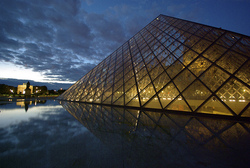 photo by Robert S. Donovan via flickr The first Wednesday night we packed our drawing pads, pastels and pencils and headed across the Seine to the Louvre, eager for this special treat. “Let’s start with classical Greek and Roman statues,” my friend suggested. “I’m a beginner, we need easier forms for me,” I lobbied. We climbed the stairs past the Winged Victory of Samothrace statue and passed through glorious halls filled with Italian paintings. We saw the crowds in front of La Joconde – the Mona Lisa – and Da Vinci’s Madonna of the Rocks (famous to Da Vinci Code readers), but we weren’t seduced. It felt liberating to give up trying to take in as much as possible to concentrate on a few pieces.
photo by Robert S. Donovan via flickr The first Wednesday night we packed our drawing pads, pastels and pencils and headed across the Seine to the Louvre, eager for this special treat. “Let’s start with classical Greek and Roman statues,” my friend suggested. “I’m a beginner, we need easier forms for me,” I lobbied. We climbed the stairs past the Winged Victory of Samothrace statue and passed through glorious halls filled with Italian paintings. We saw the crowds in front of La Joconde – the Mona Lisa – and Da Vinci’s Madonna of the Rocks (famous to Da Vinci Code readers), but we weren’t seduced. It felt liberating to give up trying to take in as much as possible to concentrate on a few pieces.
In a remote corner of the museum, we saw the perfect models – 200-400 year old wooden sculptures from Oceania. Most of the totem figures I drew were from Vanuatu and were basic shapes fun to study. They were male figures, between five and seven feet tall; some were painted, some were streamlined to the essence like Brancusi sculptures, and some were very detailed with carvings. I worked longest with a sculpture of a seated man and woman, arms and legs entwined, which once guarded the entrance of a ceremonial house in the Solomon Islands. Their figures, pedestal and head covers were all carved out of one tree. My friend drew a very detailed study of an unusual and complex hermaphrodite figure, with a crested headdress, that looked warlike and powerful.
The first time I heard about Jews living in Cuba was when my parent’s friends said they were accepted/allowed to go on a mission trip to Cuba. Because they were Jewish, they could apply through a synagogue to go with a small group of Jewish Americans bearing medical supplies to travel to Cuba for a 10 day trip exploring Cuba’s Jewish culture. The idea fascinated me. I quickly did my research and decided this was going to be my next personal story to work on.
Ever since I sailed on Semester at Sea (SAS) in fall ’04, I wanted to go to Cuba. SAS is a unique study abroad trip that takes a cruise ship and transforms it into a floating university with up to 600 students from around the nation to learn and travel together for 100 days. Quite literally, a semester at sea. Cuba was scheduled as our last port until Bush nipped that in the butt. Venezuela was the replacement, a much more dangerous country than Cuba, if you ask me.


